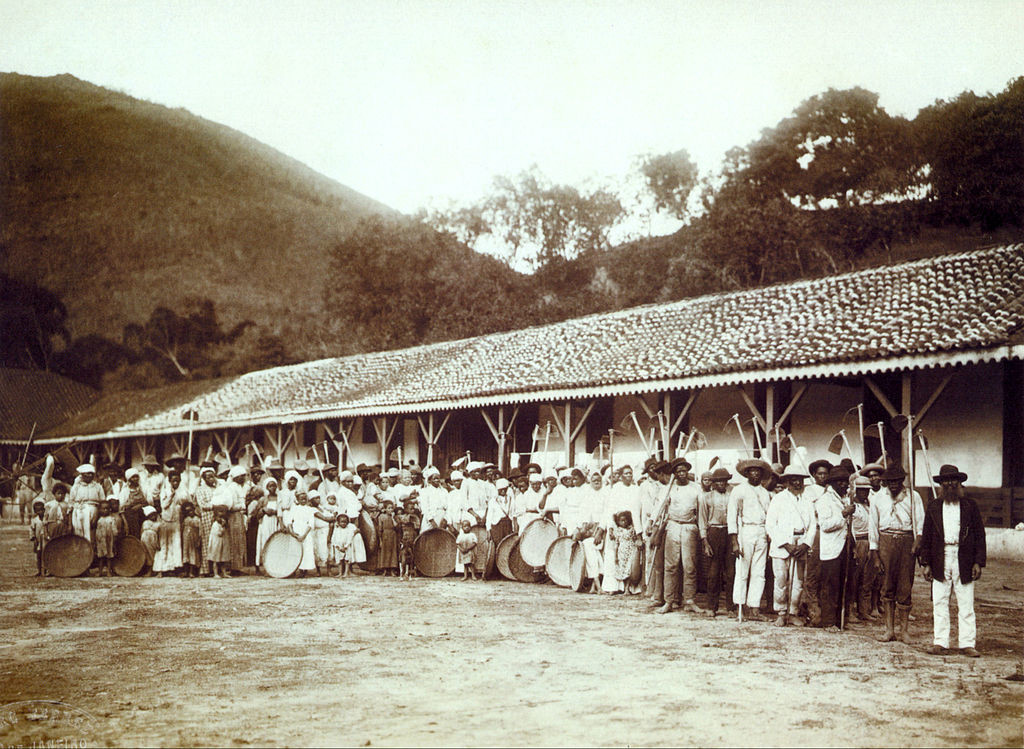Where Do The Best Coffee Beans In The World Come From?
by Jeanette Kierstead
Where Do The Best Coffee Beans In The World Come From?
Our answer lead us to historically rich coffee-famous regions as: Jamaica, Hawaii, and Mexico.
One thing which is common to all of these places is, firstly – year-round warmth, secondly – moisture, particularly in the soil, and thirdly – mountains, which provide elevation, and there seems to be a sweet spot for growing beans at a certain altitude.
We also referred to the “coffee belt”, which illustrates just where coffee plants thrive, and where they do not (unless they are raised in greenhouses, or have other means to keep them alive and well).
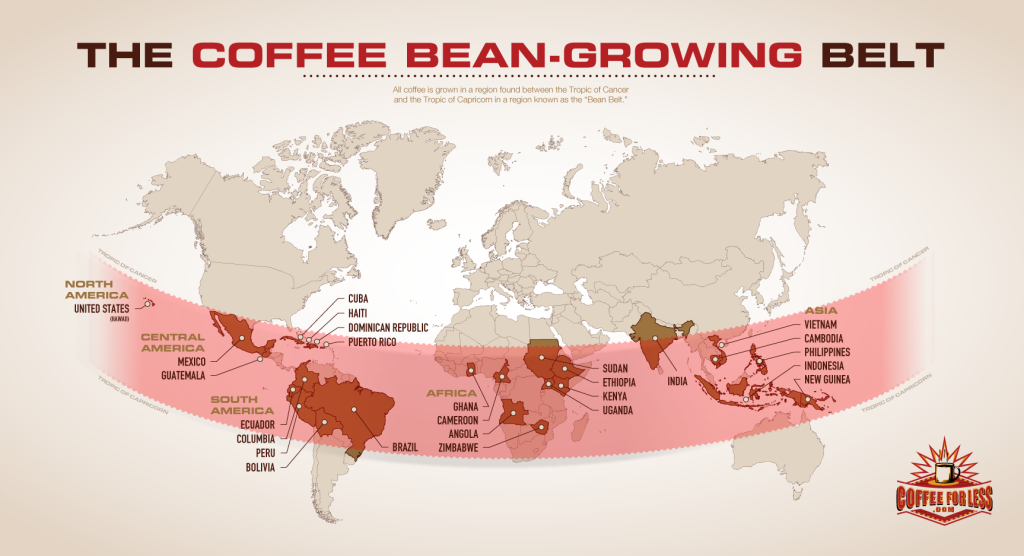
When we last left off, we were visiting the Americas, as far as ideal coffee growing conditions go.
Now, let us continue on to visit some of the more southerly American locations, including Peru, Colombia, and Brazil!
Peru – Land Of A Thousand Unique Coffee Flavors
There are a few things about Peru to note which it has in common with all the countries we’ve visited so far, and that is mountains.
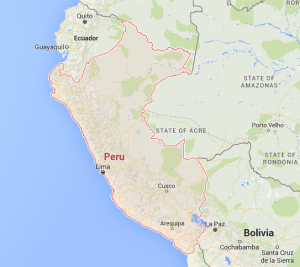
Peru, which runs along the southern Pacific Ocean, is a large country with a population of around 27 million, and the Peruvian Andes are a spectacular part of the landscape, with, at times, a difference of 40 000 feet within 180 miles!
Even if you haven’t been there yourself, you can imagine that that type of landscape is extremely wondrous and beautiful, and seeing it in pictures just proves how dramatic the Andes can be, which only serves to benefit our coffee.
Part of the drama can also be found in the temperature range in this part of the world; from frigid to tropical.
It is on these Andean peaks which serve as the growing spot for some of the world’s best coffee, once again proving that natural extremes can often result in some of the best espresso beans you’ll ever taste.
Glaciers from these magnificent peaks (sierra) feed the tropical Amazon Basin (selva) to the west.
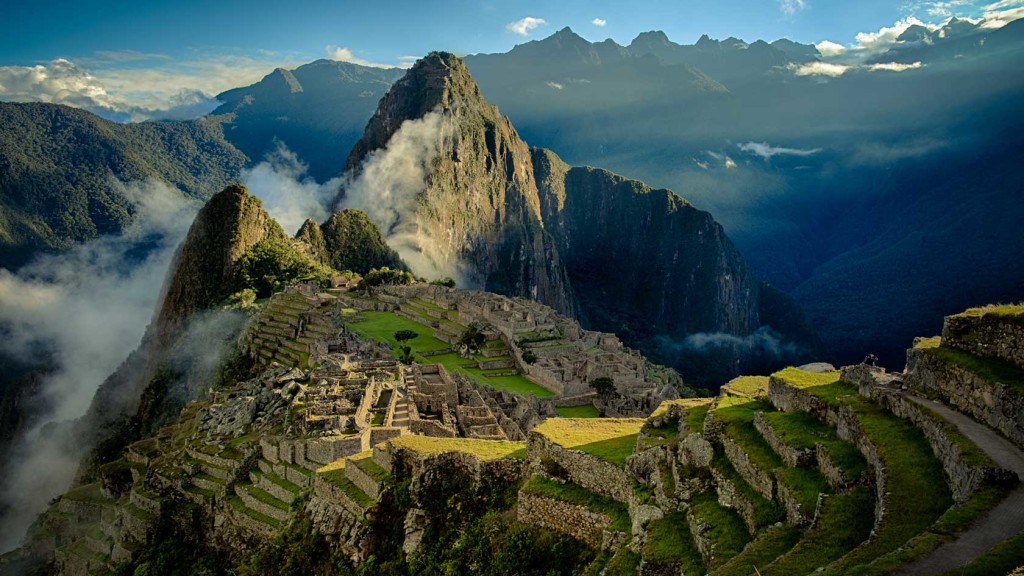
Peruvian Andes

The Mighty Amazon – Part of the Peruvian Coffee Life Cycle
One amazing fact about Peru is that 30% of their agricultural income is from their typica coffee, which is a type of arabica coffee bean, and is exported mainly to the United States and Germany.
Most of these delicious arabica coffee beans (which eventually end up in our cups) are grown on the tropical slopes of the Andes, specifically at 3000-6000 feet above sea level, proving again that elevation and premium coffee beans have a lot to do with one another, and imbuing these beans with the most spectacular of coffee flavors.
Speaking of coffee flavors, Peruvian coffee is known for its uniquely mellow, sweet, almost floral-noted flavor, which has been described often as “gentle”, “bright”, “delicate”, and “aromatic”.
Urubamba and Chanchamayo are two popular kinds of coffee from Peru, with Urubamba being grown in the south near Machu Pichu, and Chanchamayo east of Lima in the higher altitudes of the Andes.
Peru began its coffee production in the 1700’s , which, if you remember from Part 1, was around the time that our hero Infantry Captain de Clieu made his way from France to Martinique in 1723 with his lone coffee plant, while pirates opened fire on his ship and enemies on his own ship tried to sabotage his efforts.
The coffee plant’s traumatic journey to the Americas notwithstanding, its arrival in Peru has lead to over 120 000 small coffee farms holding at least two or three hectares of land apiece with which to grow their coffee.
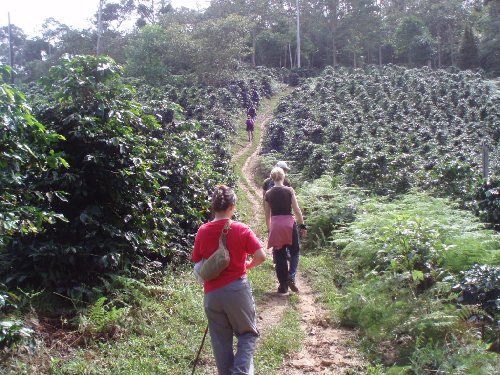
Growing coffee plants in Peru
Peruvian coffee farmers are the real deal when it comes to coffee, meaning coffee is their life blood.
Often times living far from electricity and running water, these coffee farmers manage to account for 2% of the country’s national economy.
Many of these farmers run small operations and must transport their product from point A to point B by way of mountainous foot trail and hardworking pack animal.
At the same time, there are what are called “micro-wet-mill” operations, which use more sophisticated equipment on location to get the job done with more speed and efficiency, while still maintaining the close relationship between farmer and coffee bean.

Wet Mill Operation
A micro-mill, in a nutshell, is a small coffee farm where beans can be processed and sorted for specific characteristics, resulting in a much higher quality of arabica coffee bean, not to mention properly delineated for certain types of beans that they look for.
There is something else we should mention about the delicious Peruvian coffee you may be enjoying, and its relationship to the farmers actually living and working in Peru.
We think people should be aware that when these coffee farmers make the journey to whatever destination they must reach in order to sell their premium arabica coffee beans, despite these coffee beans being of the highest caliber possible.
And, often times these coffee farmers are not paid the prices they are asking, and are simply forced to take what they are offered.
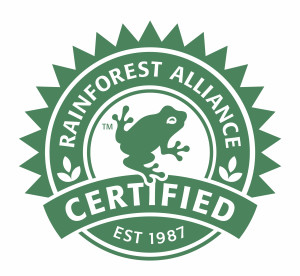
This phenomenon of the underpaid and overworked laborer is a sad story many of us are familiar with, but in the midst of our busy lives we can easily forget exactly how this coffee ends up in our cups in the first place.
If we don’t think about this process, we could easily take it for granted.
The way we can help in this circumstance is just to be aware of the plight of these coffee farmers who are working hard every day to bring us the best arabica coffee beans they can harvest, and to try and buy coffee which is certified organic whenever possible.
Colombia – Some of the best shade-grown coffee you’ll ever taste!

Here’s a quote about Colombia to start us off, which is direct from Conservation International, calling the Colombian Andes the “richest and most diverse region on earth”, with one sixth of the world’s species of plants growing there within only one percent of its land area.
In terms of bio-diversity, Colombia is one of the most rich and verdant environments on earth.

As a result, some of the world’s best coffee and espresso beans with some of the most nuanced coffee flavors come from here.
From looking at the above picture, and knowing about the kinds of places where coffee plants flourish, one might assume that the above landscape might be a good place, if not the perfect place, for coffee to grow.
| 100% Colombian Supremo Coffee, Whole Bean, Fresh Roasted Coffee Llc (5 Lb) |
|---|
| Melitta Coffee, Colombian Supreme Ground, Medium Roast, 22-Ounce |
Once again, the presence of the Andes mountain range is a key factor in Colombia’s coffee greatness, providing the elevation levels, soil, and temperature for that “sweet spot” which is needed to grow premium coffee beans.
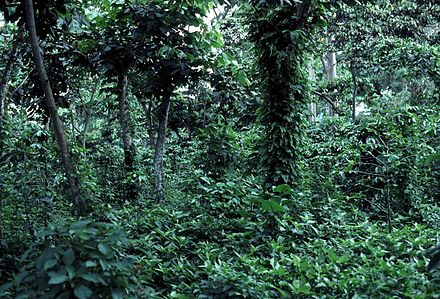
Shade-grown coffee promotes biodiversity, one of its prime advantages
Another big advantage Colombia has over other countries in terms of how their coffee is grown is the fact that most of the nation’s coffee is grown in shade (1.4 million hectares under canopy), while only roughly a third is grown in full sun, according to the FNC.
The trend towards shade-grown coffee has only increased, as sun-tolerant coffee plants tend to encourage environmentally unfriendly practices, such as deforestation.
With a country with such a large amount of bio-diversity as Colombia, it is only good sense for shade-grown coffee to be put into practice, as the foliage of such coffee production is an open invite to all of the birds, bugs, mammals, and plants to create a self-sustaining ecosystem which only benefits the coffee itself.

Concerns about pests in such a delicate biological balance, such as with the aforementioned (from Part 1) coffee berry borer, are indeed legitimate and downright frightening to farmers, but the presence of certain birds is essential here, as these birds swoop down and feast on such pests.
In fact, it has been found that a price can even be put on bringing in such feathered natural predators to keep the parasite population low.
In Jamaica in 2005, $75/hectare was the going rate for calling in the bird brigade, as it were.
Historically, it wasn’t until 1860 that Colombia’s coffee production kicked into high gear and really took hold on its own economy, with the Colombian government getting most of its revenue from tariffs on coffee exportation.
Since this time, Colombian coffee has always been a lynchpin in the growing world coffee market.
In addition, interest in Colombian coffee has always been high due to its superb taste and wide array of coffee flavors, with the help of Juan Valdez (pictured earlier in the article), who has done wonders for the promotion of Colombian coffee worldwide.
Here is an interesting documentary video about Juan Valdez, however it is not in English.
It is worth watching for some of the images alone, so be sure to take a look.
Speaking of superb taste, the classic Colombian coffee flavor profile could be described as a strong caramel sweetness, mellow acidity, and nutty overtones.
With a certain sweetness and medium body, Colombian coffee is one of the most recognizable flavors to North Americans, and rightly so; Colombia makes some of the world’s best coffee and the world knows it.
After all, it is one of the top three coffee-producing countries in the world for a reason.
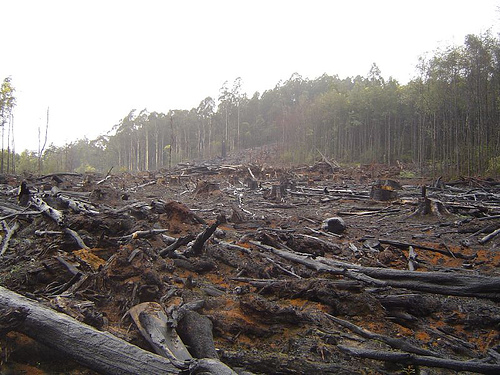
On the downside of all of this, Columbia, similar to their neighbor Ecuador, deforestation remains one of the main threats to the coffee industry in Colombia.
In addition, pesticide use, which works its way into the country’s soil and water, is another challenge Colombia and its coffee industry faces.
As with most other countries south of the equator, and like we mentioned in regards to Peru, the people who own the coffee farms in Colombia are often struggling with poverty, as the darker realities of working in the coffee industry come to light.
It is through gaining a premium on their amazing shade-grown coffee that Colombian farmers can hope to contend with the threat of big business and environment depletion.
Brazil – The biggest supplier of arabica bean coffee to the world
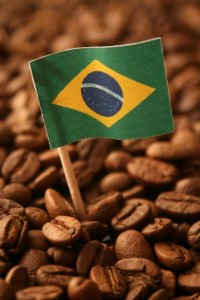
Brazil is the largest supplier of arabica coffee beans to the world, a title which they have maintained for the past century and a half.
At one point, Brazil accounted for 80% of the world’s coffee exports, which one might consider to be almost unbelievable, until you realize just how huge Brazil is.
Currently, Brazil is “down” to one third of global coffee production, which is still a whole lot of premium coffee beans.
Also, Brazil, as a culture, drink a lot of coffee themselves.
They are the 14th biggest consumers of coffee worldwide, and so, as you can see, Brazil is all about coffee however you look at it.
Mainly, Brazil specializes in growing arabica coffee beans, but still there is a fair percentage which are of the type known as robusta, with the two accounting for the entirety of their coffee production.
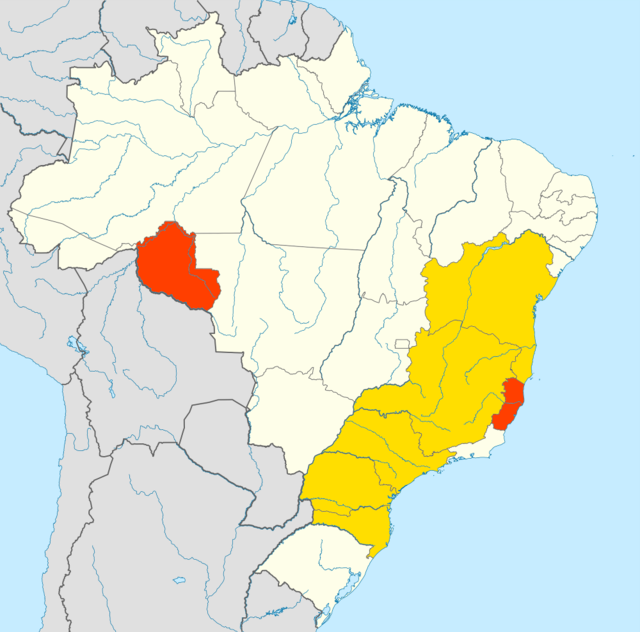
Robusta in red, Arabica in yellow
Because of their generally heavy-bodied blends, Brazil has become more associated with fine espresso.
Since the world is only becoming more in love with espresso, this tells us something about why Brazil still increases in popularity to this day for their great espresso blends.
Most of the best espresso blends from Brazil are made from either Brazil Cerrado or Bourbon Santos.
The flavor of Brazilian coffee is soft, generally nutty, or chocolatey, with a lingering aftertaste and low acidity.
The following regions – Espirito Santos, Paraná, Mogiana, Sul de Minas, São Paulo, and Bahia are all known for growing some of the best coffee beans in the world, including varietals such as Caturra, Bourbon, Typica, and Mundo Novo.
The elevation of farms in Brazil is generally lower than other countries, with a more challenging non-volcanic soil to contend with.
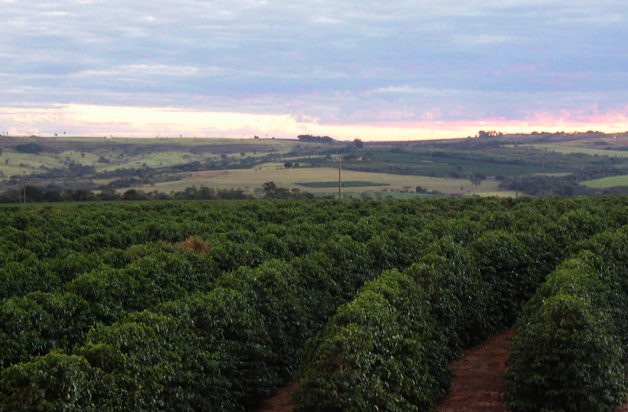
Because of the lower altitudes (a lot of coffee beans are harvested on flatter lands in Brazil) and the sheer quantity of coffee coming from Brazil at any given time, it could be said that the higher quantity means a lower quality.
Purely based on the sheer amount of coffee Brazil produces, this could be said to be true.
Like anywhere else, consumers just have to keep their eyes open for the premium Brazilian blends like this one from Pilao, as opposed to sub-standard products which are also available.
On the whole, there is a good reason that Brazil is number one in coffee exporting worldwide.
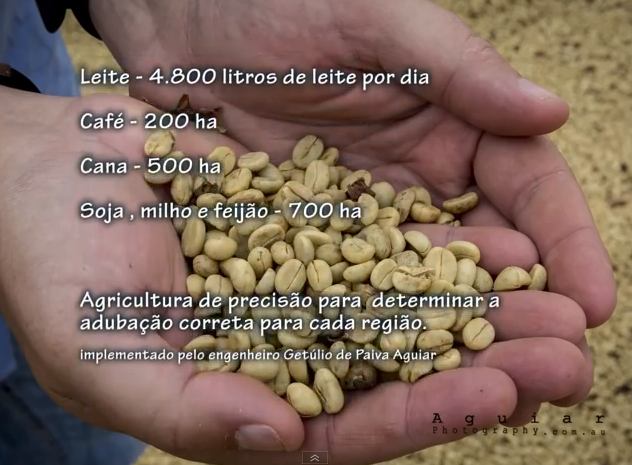
Since Brazil is so vast, there are a large number of subtle differences in the coffee bean flavors harvested by the different specialty farms across the country.
Speaking of farms, up to 71% of the coffee farms in Brazil are less than 10 hectares (Diagnóstico da Cafeicultura em Minas Gerais), while only up to 4% are more than 50 hectares. Most of these farms are using dry-processing methods to produce their coffee, and could be considered small.
Because of the sheer number of farms that operate out of Brazil, the number of potential coffee flavor notes that are detectable in the different Brazilian coffees are extremely high.
It is this broad spectrum in the flavor of the different coffees coming out of Brazil which make Brazilian coffee one of the most sought after beans on the market.
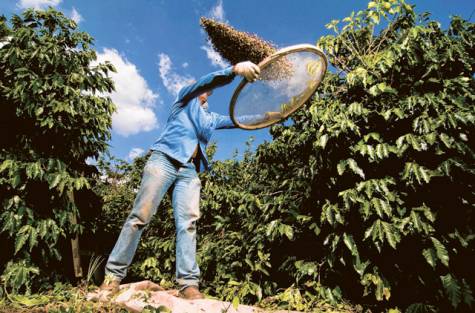
Historically speaking, at some point prior to 1990, the ICO (International Coffee Organization) and the IBC (Brazilian Institute do Café), imposed new quotas which needed to be met for coffee exports, essentially leading to a proliferation of lower quality coffee blends leaving the country.
As such, there was a brief deterioration in quality standards in Brazil, which temporarily spoiled the country’s reputation as a purveyor of fine specialty coffees.
The movement towards mass-produced blends overshadowed the premium Brazilian coffee beans that were still being made at the time.
 |
 |
 |
 |

About Jeanette Kierstead
Jeanette has been testing and reviewing kitchen appliances for over six years now, so she knows her stuff when it comes to finding the best ones. In her spare time, she loves nothing more than baking cakes and cookies – especially if she can do so with one of her favorite stand mixers! When she's not in the kitchen, Jeanette is usually looking after everything homes-related; from garden tools to smart home products.
Thoughts on "Where Do The Best Coffee Beans In The World Come From?"
 |
 |
 |
 |
Get FREE Coffee Gifts now. Or latest free grinders from our best collections.
Disable Ad block to get all the secrets. Once done, hit any button below
 |
 |
 |
 |
